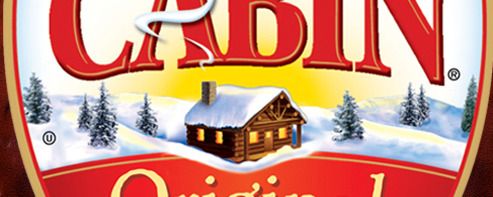96456720647

When was the last time you looked closely at food packaging? Maple syrups, frozen chicken, orange juice, butter, baking chocolate all share a commonality, that you may have never noticed.
Farms, Cabins, Villas & Homes of Fast Moving Consumer Goods (imgur gallery)
These places are illustrated metaphors, standing in for larger and uglier brands and corporations. They’re not real. They may evoke real places; the olive farms of tuscany, snow dipped cabins, red american barns. For many of us drinking and eating the stuff afixed with these symbols, that link has been simplified and abstracted down to a cartoony ideal.

This isn’t going to turn into a foamy Food Inc rant, but it’s hard for me to properly separate these romanticised ‘visions’, from the manufacturing process that delivered them to your supermarket shelf. The house above is the ‘Perdue’ house, and maybe it actually was at some point. The long, low sloped roofs in the distance, bathed in golden light might even be chicken coops too. Either way, it’s a nostalgic memory, rather than an accurate portrayal or even caricature of a 21st century “major chicken processing company”. It’s fake. No one lives in that place, and it’s definitely not where your chicken breasts came from.

The origin story of the Toll House serves as a neat analogy to this style of packaging, and the folkloric american heritage it eludes to.
“Contrary to its name and the sign, which still stands despite the building burning down in 1984, the place was never a toll house and it was built in 1817, not 1709. The”toll house” and the “1709” was a marketing strategy. The inn was not rebuilt. The site is marked with a historical marker, and that land is now home to a Wendy’s restaurant and Walgreens pharmacy.“ - Wikipedia
Not only does the Toll House not exist today, but it never did!